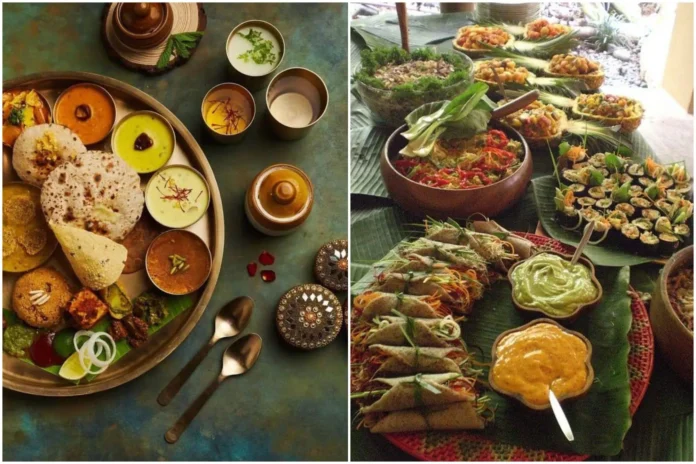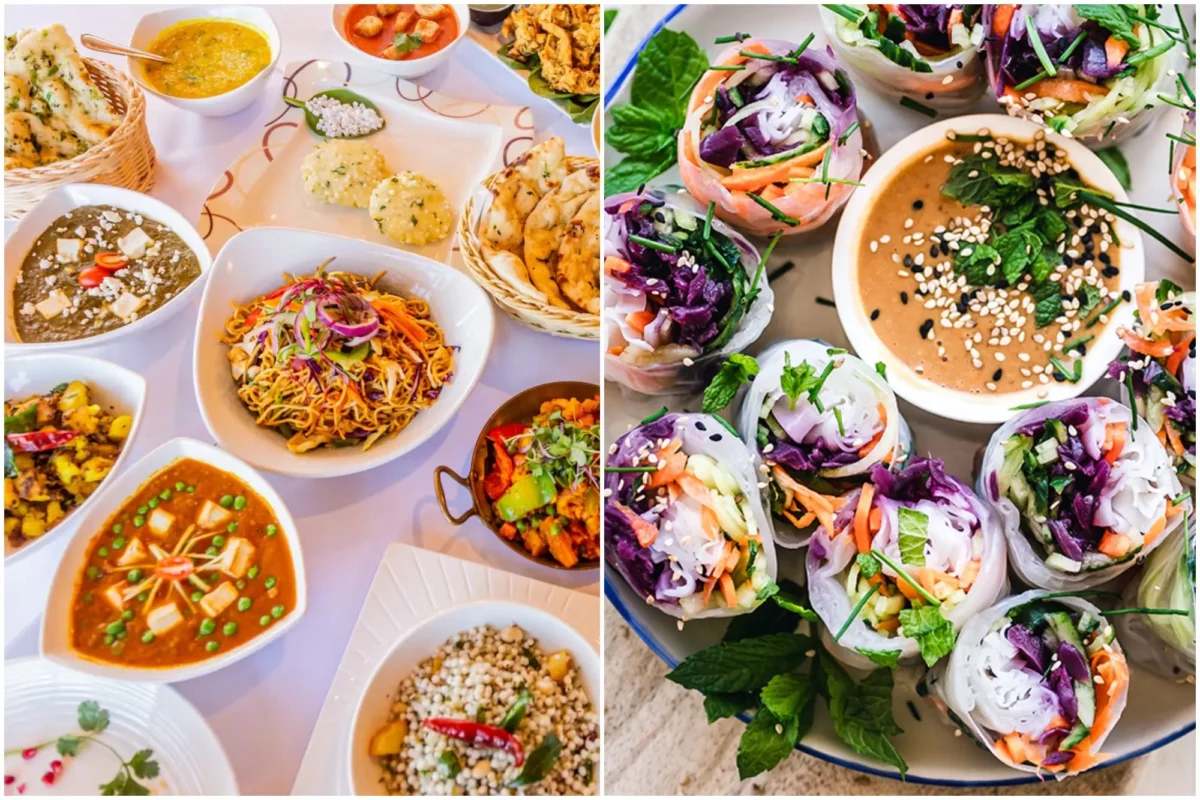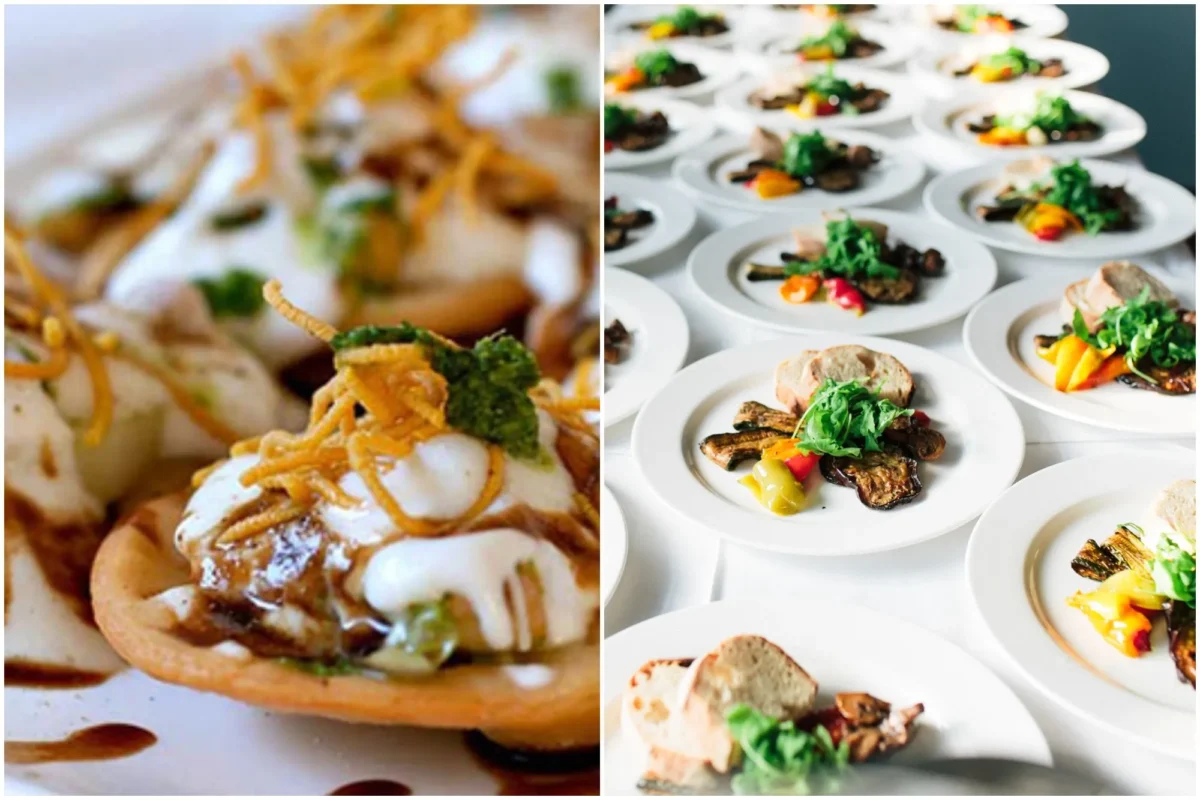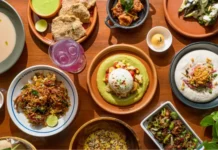Food is the soul of any celebration. Planning a wedding menu is not as easy as it seems. But here are some tips to help you with it.
Planning the perfect wedding involves hundreds of decisions, but if there’s one element that guests will remember long after the pheras and dance performances, it’s the wedding menu. Whether you’re putting together a lavish Indian wedding menu or a modern fusion spread, food defines the wedding experience. It sets the tone, reflects your cultural roots, and is often the highlight people rave about for years. And as anyone who has attended a big fat Indian wedding knows—the food can make or break the celebration.
Creating a memorable wedding food menu is not just about selecting dishes you love. It requires thoughtful strategy, guest-centric decisions, season-wise planning, and coordination with caterers who can transform your vision into a gastronomical experience. From dietary preferences to regional authenticity and portion planning, every detail matters.
Before you dive into tastings and elaborate food trials, here is a comprehensive guide by Wedding Affair on the most important things to consider for wedding menu planning.
Table of Contents
- Importance of Planning Your Wedding Menu Thoughtfully
- Know Your Guests and Their Preferences
- Consider the Wedding Season and Venue
- Balance Variety with Simplicity
- Regional and Traditional Dishes Matter
- Decide Between Buffet and Plated Service
- Plan the Perfect Beverage Menu
- Budgeting Smartly for Your Wedding Menu
- Taste Testings and Vendor Selection
- Presentation, Hygiene & Service Quality
- Diet Restrictions and Food Allergies
- Dessert Counters and Late-Night Snacks
Importance of Planning Your Wedding Menu Thoughtfully
Your wedding menu is more than just a collection of dishes—it’s an experience. In Indian weddings especially, families often take great pride in showcasing their culture through food. A thoughtfully planned Indian wedding menu ensures guests feel cared for and leaves a lasting impression. Moreover, great food helps maintain guest energy and creates a joyful environment throughout long celebrations. Hence, you must treat the menu as an essential pillar of the overall wedding planning.
Read Also: Mini Food Bites You Should Have in Your Wedding Menu
Know Your Guests and Their Preferences
This is the starting point of wedding menu planning. Consider:
- The age group of your guests
- Whether they prefer traditional foods or experimental dishes
- How many vegetarian vs non-vegetarian guests you’ll have
- The presence of elderly guests who may prefer simpler flavours
- Children who may need kid-friendly options
Understanding guest preferences helps avoid wastage and ensures that everyone finds something they enjoy.
Consider the Wedding Season and Venue
Season decides flavour and comfort.
- Summer Weddings: Lighter foods, refreshing drinks, fruits, cold desserts, chaas, tender coconut, and salads work best. Heavy gravies may feel too rich.
- Winter Weddings: Richer dishes like nihari, dal makhani, gajar ka halwa, and warm beverages feel comforting.
- Monsoon Weddings: Avoid foods that get soggy quickly; focus on piping-hot appetisers and covered counters.
Venue also matters. Outdoor venues require careful planning regarding heating/chilling stations, while indoor hotel banquets offer easy temperature-controlled setups.
Balance Variety with Simplicity
A wedding is not the time to overwhelm guests with complicated dishes. Instead, aim for a balanced wedding food menu that includes:
- 3–5 appetizers
- 2–3 main gravies
- 2 rice options
- 1–2 breads
- 2 desserts minimum
- Separate live counters for chaat, pasta or dosa
- A few healthier options for calorie-conscious guests
Guests appreciate variety, but too much of it can lead to confusion and wastage. The idea is to create a seamless flow from starters to dessert.
Regional and Traditional Dishes Matter
Indian weddings are incomplete without dishes that reflect the couple’s or families’ roots. Whether it’s a Rajasthani Dal Baati Churma, Hyderabadi biryani, Bengali fish curry, Punjabi chole bhature, or South Indian rasam, regional food brings authenticity and nostalgia.
Even if you’re planning a modern or fusion menu, consider including:
- Signature family recipe
- A traditional mithai counter
- Regional welcome drinks
- Local breads or seasonal pickles
This adds emotional warmth to your Indian wedding menu.
Decide Between Buffet and Plated Service
Both have their pros and cons.
Buffet
- Great for large gatherings
- Encourages variety
- Guests can eat at their own pace
Plated Service
- Looks elegant and sophisticated
- Better portion control
- Works well for intimate weddings and cocktail nights
Some couples pick a hybrid style, with appetizers served to the table and mains available on buffets.
Read Also: 9 Foods You Should Skip on Your Wedding Menu
Plan the Perfect Beverage Menu
A wedding menu is incomplete without beverages. These can include:
- Mocktails and cocktails
- Fresh juices
- Traditional drinks like jaljeera, aam panna, kesar doodh
- Tea and coffee counters
- Winter weddings: hot chocolate, kahwa, mulled drinks
Keep in mind that beverages require separate budgeting, especially if you include alcohol.
Budgeting Smartly for Your Wedding Menu
Food is usually one of the largest expenses in an Indian wedding. Plan your budget early so you can allocate wisely.
Tips for budget-friendly menu planning:
- Choose seasonal vegetables and fruits
- Reduce the number of live counters
- Opt for a limited premium selection instead of too many dishes
- Keep track of per-plate cost
- Negotiate combos like appetisers + beverages
The key is to spend on dishes that your guests will appreciate instead of exotic items that may go unnoticed.
Taste Testings and Vendor Selection
Never skip tastings. This step helps you evaluate:
- Flavour consistency
- Portion sizes
- Presentation style
- Quality of ingredients
- Customisation options
Select caterers who have experience with large-scale weddings and can handle last-minute volume changes.
Presentation, Hygiene & Service Quality
The best food in the world can be ruined by poor presentation or hygiene. Ensure your caterer:
- Follows proper food safety guidelines
- Keeps hot foods hot and cold foods cold
- Uses clean serving equipment
- Staff is well-trained and dressed properly
- Counters look appealing and well-lit
A visually stunning setup enhances the guest experience tremendously.
Diet Restrictions and Food Allergies
With modern wellness preferences, dietary considerations are crucial. Add options for:
- Vegan
- Gluten-free
- Jain
- Diabetic-friendly
- Low-oil and low-spice dishes
Make sure allergy-friendly items are clearly labelled on counters.
Dessert Counters and Late-Night Snacks
Desserts are the grand finale of your wedding menu. Offer a mix of:
- Traditional Indian sweets
- International desserts
- Bite-sized pastries
- Live counters like jalebi, waffle, crepes or kulfi
Late-night snacks like sliders, fries, popcorn, or hot chocolate shots can be added for after-party guests.
FAQs
- How do I choose the right dishes for my wedding menu?
Start by considering guest preferences, seasonal suitability, and your cultural heritage. Then shortlist dishes that offer variety without overwhelming the crowd.
- How many dishes should an ideal Indian wedding menu have?
On average, 20–30 items including starters, mains, sides, desserts, and beverages is a good number for most weddings.
- When should I finalise my wedding food menu?
Ideally 2–3 months before the wedding, after conducting tastings and confirming guest count.
Read Also: Must Add Sweets for Your Wedding Menu
Subscribe to Wedding Affair for everything wedding.








